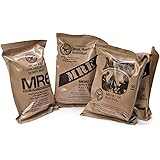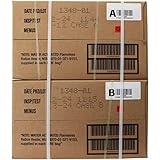1. Prepare Your Emergency Plan
Identify Exit Routes
Let me tell you, one of the first things I learned about emergency evacuations is the importance of knowing your exit routes. Seriously, having multiple clear paths can make all the difference in a panic. You want to have those emergency exits memorized, like the back of your hand. Walk through the building and take a mental note of those arrows pointing the way out.
Don’t just stick to one route; it’s crucial to scout out alternatives. Because you never know when one exit might be blocked or unsafe. I often find it helpful to map it out, even drawing a little escape route on a piece of paper. And hey, keep that handy near your evacuation plan for a quick reference!
Lastly, don’t forget to factor in anyone with mobility issues in your plan. Make sure there’s accessibility for everyone involved, and you’ll feel confident that you’ve got bases covered. Trust me, planning makes you feel more at ease.
Communicate Roles
Next up, let’s talk about communication. It may sound super boring, but this is the backbone of a successful evacuation. I always found it helpful to designate roles ahead of time, so during a crisis, everyone knows exactly what to do. Assign folks as your point people—perhaps someone keeps track of attendance, while another manages the exit logistics.
Regular meetings before an emergency happen can go a long way. Practice makes perfect, you know? And when you give everyone a chance to speak up and share their thoughts or concerns, it cultivates a sense of teamwork that’s invaluable. Trust me; it’s not just an assembly line; cultivating camaraderie is key.
Don’t forget to circulate that information! Keep everyone informed of their roles through handouts, emails, or group texts. This way, if an emergency arises, you won’t just be flapping in the wind—everyone will be ready to act!
Keep Emergency Supplies Ready
I can’t stress enough how vital it is to have an emergency supply kit ready to go. This is more than just a fancy backpack filled with snacks. These supplies should include basics like water, flashlights, first-aid materials, and maybe even a map of the area. You never know how long you’ll need to wait before help arrives.
Now, I usually recommend storing kits in easily accessible locations, preferably near your exit routes. And here’s an insider tip: make a checklist to ensure you’re stocked up, and do a little inspection every few months. That way, you won’t be in for a surprise when the granola bars have an expiration date from two years ago!
== > What if ... Get a FREE Subscription to PREPARE
Lastly, be sure to customize your supplies based on the specific needs of the people around you. If you’ve got kids or pets, throw in some supplies that can help them too; that’s the kind of thinking that saves the day in an actual pinch.
2. Practice Regular Evacuations
Conduct Drills
If there’s one thing I can tell you from experience, it’s that practicing drills is absolutely non-negotiable. Getting everyone familiar with the evacuation plan makes it second nature. Don’t just call it in once a year; I recommend doing it quarterly. The more you practice, the less confused folks will be when there’s real stress in the air.
When conducting drills, simulate various scenarios. Maybe one drill is for a fire, and the next could simulate an earthquake. It keeps it fresh and prepares folks for the unexpected! Once the drill is over, hold a little debrief. Ask everyone what worked, what didn’t, and talk through improvement ideas. Team feedback is golden!
I often like to incorporate a bit of competition into our drills. Simple incentives for teams that execute the evacuation best can turn what’s typically a serious endeavor into something fun and engaging. Who doesn’t want a pizza party after a successful drill?
Engage Everyone
When it comes to evacuations, everyone’s participation is crucial. This means that you can’t just rely on managers or designated emergency personnel to get the word out. Everyone should be in the loop! Call on team members to share their thoughts during planning, so they feel ownership over the process.
Integrating live scenarios can be a great way to engage people. Maybe have them take turns playing the “victims” in an evacuation situation; it delivers a dose of realism! Encourage group discussions about how they may react differently in real emergencies. The more you get everyone involved, the more attentive they’ll be during the actual event.
And let’s not forget about boosting morale through incentives. Recognizing those who actively participate creates a sense of community. Plus, it makes people more eager to engage in the process! Encourage camaraderie instead of dread—people will be more likely to adapt quickly in chaotic situations.
Evaluate After Each Drill
Feedback isn’t just a buzzword; it’s a necessary step! After each drill, I always emphasize how vital it is to evaluate. Gather everyone together and review what went well and what could use more finesse. An open discussion about drill experiences can uncover potential issues or miscommunications before they pop up in reality.
Documentation is also super essential. Keep an organized record of findings from the drills for easy reference later on. It helps track patterns of issues or improvements. The idea is to learn and evolve each time you practice; don’t let this precious information go to waste!
Most importantly, foster a culture where giving feedback is encouraged and welcomed! When people feel like their opinions count, they will engage more actively in future drills. I’ve seen firsthand that the stronger the team dynamic, the smoother the emergency response will be!
3. Ensure Communication Channels Are Open
Utilize Technology
In today’s world, we’ve got some tech at our disposal that can really save the day. Seriously, utilizing apps and platforms for communication during emergencies is a game-changer. You can set up group chats for quick alerts, and those notifications can keep everyone informed when an evacuation’s order goes out.
When I was working through this, I found it really beneficial to research platforms like emergency management systems that offer alerts through multiple channels. Think of it as a modern-day safety net. So, whether it’s through texts, emails, or even an old-school siren, make sure there’s a plan! This tech can help reduce chaos amidst potential panic.
And don’t forget about backup plans! Sometimes tech can fail (I mean, we’ve all had that one phone drop), so consider having verbal check-ins. Assign a point person for crucial updates. Make sure everyone in your organization knows who to go to for information!
Regularly Update Contact Lists
Let’s face it; people come and go, and updates are inevitable. I stress this point a lot! Keeping your contact lists fresh can save you time and stress when you need to communicate quickly. Work on a system where these updates are consistently reviewed—perhaps a quarterly check once a drill is planned!
Also, make sure that everyone knows how and where to access these lists. It’s important for individuals to have the info they need at their fingertips. Whether it’s an internal site or a shared document, the easier it is to access, the better! Have it easy to find, because in a pinch, no one wants to search through files!
Another layer to this is encouraging team members to share their preferred communication methods. Personalize your approach! Some folks may prefer texts, while others might rather get emails. You’ll cultivate a connection that boosts morale and efficiency!
Regular Check-Ins
Regular check-ins can sometimes feel like a chore, but trust me, they can be absolutely worth it! In my experience, having a set schedule for these meetings encourages culture and keeps everyone on the same page. Make them light-hearted! Casual coffee chats or informal virtual meetings could spice things up.
Get Preparedness and Self-Reliance Tips. Subscribe Now!
We’ve tackled topics on communication methods, drilling practices, and even beloved emergency snacks! Go ahead; make this part of your routine! Share personal stories or discuss anything that’s come up since last time; it strengthens bonds and creates a more unified front.
People are also more inclined to voice concerns in these relaxed settings. Let them know that all questions are valid regarding emergencies. The clearer your channels of communication are, the more confident everyone will feel in times of stress.
4. Train Your Team
Implement Training Sessions
You can’t just toss people into an emergency situation and expect them to shine; training sessions are crucial! I’ve found these workshops incredibly helpful, as they equip team members with knowledge about emergency protocols and empower them with hands-on practice.
During these sessions, encourage hypothetical situations and respond accordingly. It’s eye-opening to see how different people deal with stress. Plus, improving their understanding of various emergencies prepares them for real-life scenarios, making them feel more capable and confident.
A great tip I picked up is to bring in professional trainers for specialized emergencies—think fire safety or first-aid! It adds expertise and real-world insights that your team can truly benefit from, enhancing their knowledge and broadening their skillset!
Certification Opportunities
One way to ensure everyone’s skillset is top-notch is to investigate certification opportunities for them. I’m talking first aid, CPR, or emergency response training here. Not only does it build confidence within your team, but it also establishes a culture of responsibility and readiness!
Plus, people tend to value certifications, which can be great for morale. It shows you’re investing in their growth and skill development. I always recommend making it fun—maybe even offer an award for the most engaged participants!
Be sure they understand the application of knowledge as well. It’s not just checking a box; the training you’re investing in can actually save lives! This mental connection creates a lasting impression and emphasizes the importance of being prepared.
Encourage Open Learning
Creating an environment of open learning is honestly one of the best things you can do for your team. Truly, when folks feel comfortable asking questions or seeking knowledge, it uplifts the entire group! You could maintain a wall of tips or conduct informal learning lunches where people can share useful insights regarding emergency protocols.
Also, keep informative resources accessible; think of documents, videos, or helpful links. Encouraging ongoing education empowers people! This journey doesn’t stop after the initial training; it should be an ongoing endeavor where everyone continuously learns. Emphasize that there’s always room for growth!
Building a friendly knowledge-sharing atmosphere fosters teamwork while reminding everyone of the importance of readiness. Remember: knowledge is power, but it’s even better when it’s shared!
5. Review and Revise Your Plan Regularly
Annual Assessments
As the saying goes, “Nothing stays the same.” So it’s absolutely vital to revisit your emergency plan regularly. I recommend conducting an annual assessment where you go through each step and ensure everything still aligns. It’s like a health check-up for your strategy!
During this time, look for gaps or issues. Maybe a few building modifications occurred, or the team has changed. It’s good to check in and adapt to the evolving scene! Regular assessments nurture a culture of continuous improvement that’ll keep you and your team on your toes.
Plus, making this a routine falls right in line with keeping communication channels open. It’ll encourage discussions about what could be optimized or adapted. You’ll gain great insights from your team members when they see that their feedback is valued, trust me!
Seek Feedback from All Team Members
As we touched on earlier, gathering feedback is priceless. But here’s the kicker—encourage everyone, even those without direct roles in emergencies, to share feedback. You never know who among your team might have unique perspectives that can inform improvements!
I always advocate for anonymous feedback—this way, people can speak candidly without fear. Create an easy system for gathering insights via online forms or suggestion boxes, which allows your team to share candidly. It breeds an atmosphere where everyone feels comfortable voicing their thoughts. Feedback is not criticism! It’s a stepping stone to progress!
You can even have designated “exit interviews” after drills or training sessions. It’s a smart way to hear honest opinions right after they experience the action. This immediate feedback can be super valuable and spur meaningful changes!
Stay Updated on Best Practices
Finally, make it a habit to stay informed about the latest emergency management practices. The world around us is always changing, so what worked five years ago might not apply today. I can’t tell you how many changes I’ve seen! Be proactive and keep an eye out for trends or newly published research in your field.
Networking with other organizations also provides fresh insights! You can learn so much from others’ experiences—plus it’s an excellent way to build relationships. Panel discussions and community events bring people together and foster an environment of shared knowledge.
Ultimately, a willingness to adapt keeps your plans relevant and effective. Remember, the goal is to be as prepared as possible so that when emergencies occur, you feel confident and secure in your response!
FAQs
What is the most important step in an evacuation plan?
While all steps are crucial, preparing your emergency plan is definitely foundational. Knowing exit routes, roles, and having supplies ready to go can make all the difference in a crisis!
How often should drills be conducted?
It’s ideal to conduct drills quarterly! Regular practice keeps the procedures fresh in everyone’s minds and ensures that individuals know what to do in different situations.
How should communication be handled during an emergency?
Utilizing technology like group texts and emergency management apps can facilitate timely communication. Having a point person for updates can also streamline communication when every second counts.
Why is training important for emergency evacuations?
Training prepares your team for various emergency scenarios, improving their response in a real situation. Well-trained employees feel more capable and confident, which can significantly lower panic levels during an actual emergency.
How can I encourage feedback on our emergency plan?
Encourage open dialogue and create easy feedback methods like anonymous surveys. Make sure everyone understands their input is welcome and valuable; this inclusivity will foster a culture of continuous improvement.






